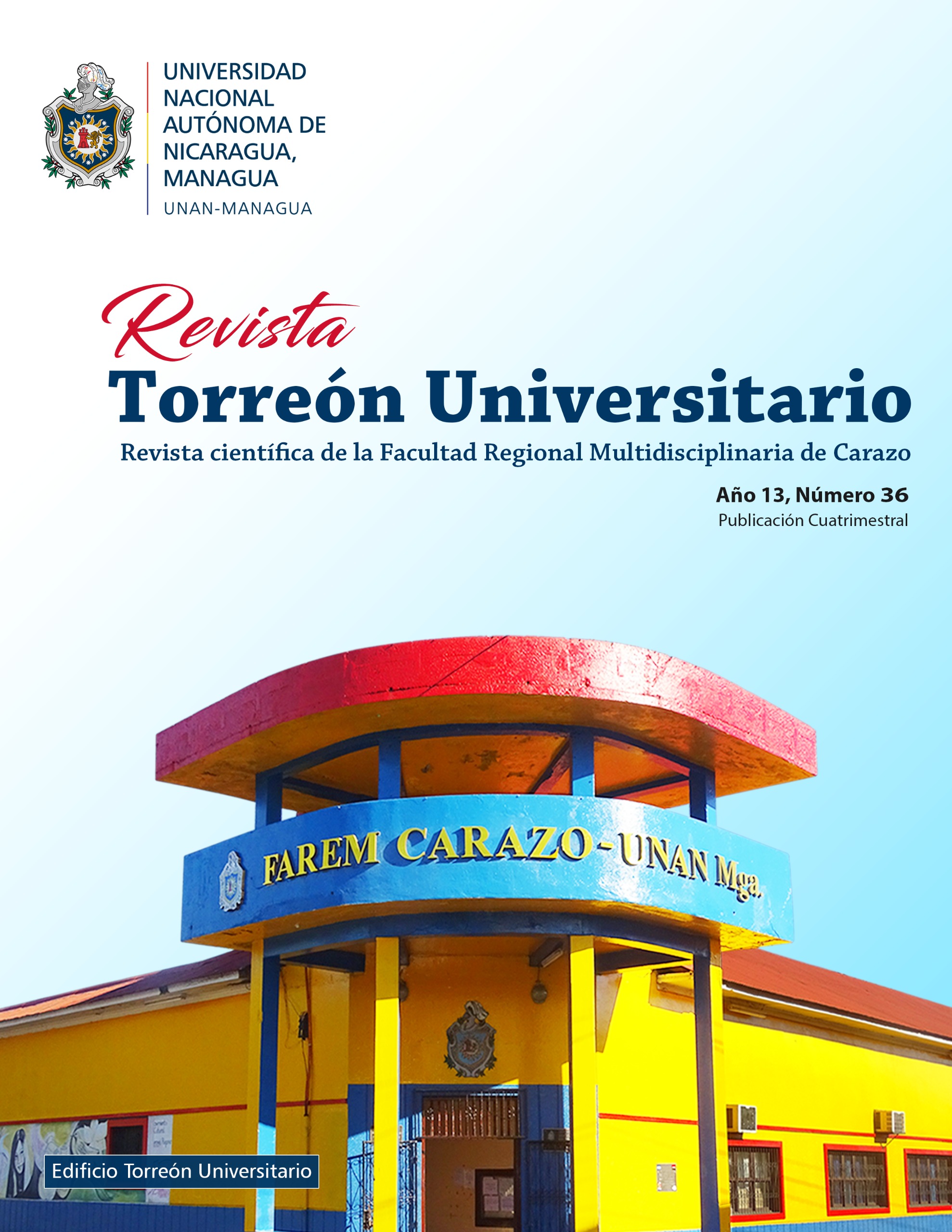Abordaje psicoterapéutico basado en evidencia del Trastorno Límite de Personalidad: La Terapia Centrada en la Transferencia
DOI:
https://doi.org/10.5377/rtu.v13i36.17621Palabras clave:
Trastorno Límite de Personalidad, Terapia Centrada en la Transferencia, Psicoterapia psicodinámicaResumen
El Trastorno Límite de Personalidad consiste en un patrón de inestabilidad de las relaciones interpersonales, identidad y afectividad e impulsividad en diversas áreas, el cual generalmente inicia en la edad adulta temprana. En el tratamiento de este trastorno de personalidad, la Terapia Centrada en la Transferencia (TFP) es una de las principales formas de abordaje psicoterapéutico contemporáneas y con evidencia empírica. Es una terapia psicodinámica que se enfoca en mejorar la comprensión de los pacientes de sus motivos y sentimientos inconscientes que provocan síntomas, y tiene como objetivo exponer y resolver conflictos intra-psíquicos. En términos estructurales, la TFP tiene el objetivo general de que el paciente logre funcionar en un nivel neurótico de organización de la personalidad (ONP), con una prueba de realidad conservada, el predominio de operaciones defensivas en torno a la represión y una identidad integrada, desarrollando representaciones coherentes y tridimensionales de sí mismo y de los demás, lo que se manifestaría en la reducción de síntomas, integración de identidad y reintegración en las relaciones íntimas.
Descargas
Referencias
American Psychiatric Association. (1980). Diagnostic and Statistical Manual of Mental Disorders (3rd ed.). Washington DC: American Psychiatric Association.
Asociación Americana de Psiquiatría (APA). (2014). Manual diagnóstico y estadístico de los trastornos mentales (DSM 5). Arlington: Editorial Panamericana.
Barlow, D. (Ed.). (2021). Clinical handbook of psychological disorders, sixth edition: A step-by-step treatment manual. ProQuest Ebook Central.
Behn, A. y Fischer, C. (06 de junio 2021). Mitos y realidades sobre el Trastorno de Personalidad Límite. Ciper. Recuperado el 6 de junio 2021 de https://www.ciperchile.cl/2021/01/15/mitos-y-realidades-sobre-el-trastorno-de-personalidad-limite/
Clarkin, J., Yeomans, F. & Kernberg, O. (2006). Psychotherapy for borderline personality: Focusing on object relations. Washington, DC: American Psychiatric Publishing.
Clarkin, J., Levy, K., Lenzenweger, M., & Kernberg, O. (2007). Evaluating three treatments for borderline personality disorder: A multiwave study. American Journal of Psychiatry, 164, 922–928.
Crowell, S., Beauchaine, T., & Linehan, M. (2009). A biosocial developmental model of borderline personality: Elaborating and extending Linehan's theory. Psychological bulletin, 135(3), 495–510. https://doi.org/10.1037/a0015616
Foelsch et al. (2015). Tratamiento para la Identidad del Adolescente (AIT). México D.F.: Editorial El Manual Moderno.
Gabbard, G. O. (2014). Psychodynamic psychiatry in clinical practice (fifth edition). Washington D.C.: American Psychiatric Pub.
Gabbard, G. O. (2017). Psychodynamic psychiatry in clinical practice (special edition). Washington D.C.: American Psychiatric Pub.
Gunderson, J. G., Herpertz, S. C., Skodol, A. E., Torgersen, S., & Zanarini, M. C. (2018). Borderline personality disorder. Nature reviews. Disease primers, 4, 18029. https://doi.org/10.1038/nrdp.2018.29
Kernberg, O. (1987). Trastornos graves de personalidad. Estrategias psicoterapéuticas. México DF: Editorial El Manual Moderno.
Kernberg, O., Yeomans, F., Clarkin, J., & Levy, K. (2008). Transference focused psychotherapy: overview and update. The International journal of psycho-analysis, 89 (3), 601–620. https://doi.org/10.1111/j.1745-8315.2008.00046.x
Labbé, N., Castillo, R., Steiner, V. y Careaga, C. (2020). Diagnóstico de la Organización de la personalidad: Una actualización teórico-empírica de la propuesta de Otto F. Kernberg. Revista chilena de neuro-psiquiatría, 58(4), 372-383.
Laurenssen, E., Hutsebaut, J., Feenstra, D. et al. (2013). Diagnosis of personality disorders in adolescents: a study among psychologists. Child Adolesc Psychiatry Ment Health 7, 3. https://doi.org/10.1186/1753-2000-7-3
Lingiardi, V., & McWilliams, N. (2017). The Psychodynamic Diagnostic Manual–2nd edition (PDM-2). New York: The Guilford Press.
Stoffers-Winterling, J. M., Voellm, B. A., Rücker, G., Timmer, A., Huband, N., & Lieb, K. (2012). Psychological therapies for people with borderline personality disorder. Cochrane Database of Systematic Reviews, (8).
Videler, A., Hutsebaut, J., Schulkens, J., Sobczak, S., & Van Alphen, S. (2019). A life span perspective on borderline personality disorder. Current psychiatry reports, 21(7), 51. doi: 10.1007/s11920-019-1040-1
Wall, K., Kerr, S., & Sharp, C. (2020). Barriers to care for adolescents with borderline personality disorder. Current Opinion in Psychology. (37), 54-60. https://doi.org/10.1016/j.copsyc.2020.07.028
World Health Organization (WHO). (1992). The ICD 10 Classification of Mental and Behavioural Disorders. Geneva: WHO.
Descargas
Publicado
Número
Sección
Licencia
Derechos de autor 2024 Universidad Nacional Autónoma de Nicaragua-Managua

Esta obra está bajo una licencia internacional Creative Commons Atribución-NoComercial-SinDerivadas 4.0.
The authors who publish in this journal agree to the following terms.
- The author or authors of the articles, essays or research grant the National Autonomous University of Nicaragua, Managua (UNAN-Managua) the editing rights (copyright) of the submitted work, therefore the University has the exclusive right to publish the article for the entire copyright period.
- These copyrights/authors authorize Torreón Universitario Magazine and the University to edit and disseminate/publish the article in said Magazine, including printed and electronic reproduction, storage, retrieval and any other type of publication, and sources of secondary information as services. of summaries and databases, they also empower it to protect the article against unauthorized use for dissemination by printed or electronic media (PDF, HTML, EPUB, XML or others).
License for use of content
The magazine uses the Creative Commons Attribution-NonCommercial-NoDerivs 4.0 International License.
Under this statement:

This journal is licensed under a Creative Commons Attribution-NonCommercial-NoDerivatives 4.0 International License. It can be copied, distributed and transmitted publicly as long as the author and source are cited (Revista Torreón Universitario), it should not be modified or used for any commercial purpose. The full license can be found at http://creativecommons.org/licenses/by-nc-nd/4.0/.



